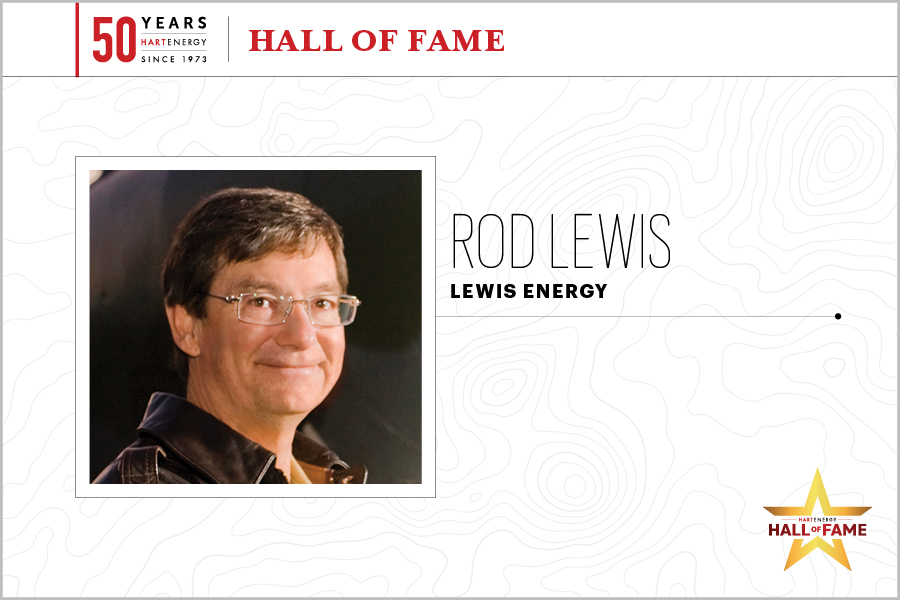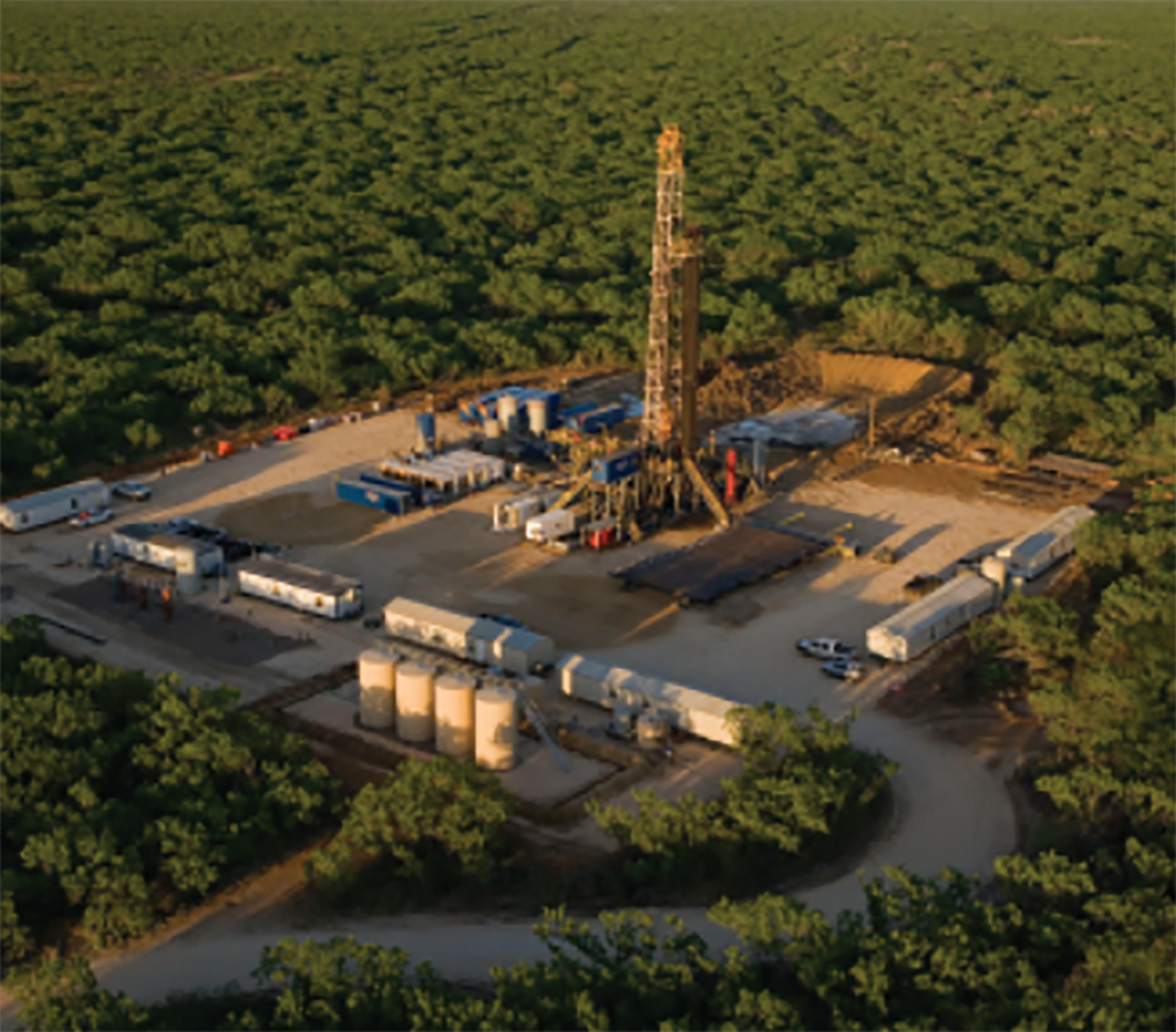Rod Lewis
Editor's note: This profile is part of Hart Energy's 50th anniversary Hall of Fame series honoring industry pioneers of the past 50 years and the Agents of Change (ACEs) who are leading the energy sector into the future.

In 2008, Rod Lewis was certain something odd was happening in South Texas. A rig had appeared in La Salle County that summer, drilling for Corpus Christi, Texas-based explorer First Rock.
That wasn’t unusual in the long-drilled area. Neither was an operator using a pseudonym to tight-hole a wildcat. It was by no means concealed, either, on the flat South Texas landscape of oak and mesquite trees, scrub brush, deer stands and wild hogs.
And neither was it odd that Lewis would hover about well pads, spying on his South Texas E&P neighbors.
What fascinated Lewis was how much drillpipe was at the site and that this well had been drilled for more than seven weeks now. Then the frac crew and equipment showed up.
The spread was enormous.
Besides drilling and studying his and others’ well logs, Lewis had explored South Texas by air—stalking wells, placating a detective gene.
His fascination with the air had been inherited; his father was an Air Force pilot from whom he had learned how to repair aircraft before getting a license to fly them.
In 1976, with a bachelor’s degree in criminal justice from Texas A&I University (now Texas A&M-Kingsville), he wanted to work for the FBI but was rejected for being near-sighted, which was not correctable by surgery at the time.
He went to work, then, as a gauger, going from wellhead to wellhead. In 1982, he bought a first well of his own, Williams & Williamson 1A, for $13,000.
In the early aughts, as stimulated, horizontal wells were working in other shale plays. Lewis wanted to try it on the Eagle Ford. In one, the tubing became stuck. He quit.
Still, the Eagle Ford kept taunting him. In 2005, “I decided, ‘Well, hell,’” he said in “The American Shales.”
Another attempt also failed. “We screened out on the third zone. It was pretty much a complete failure.”
A major U.S. pressure pumper said a $3.5-million job was needed to make it work. “I’ll never forget this. I told them at the conference table, ‘Guys, I just spent my last cent getting the damn [$3-million] well drilled.’”
He dropped it. Later, he said, “If we would have, it would have broken the Eagle Ford loose right then and there, back in 2005.”
That pseudonym driller he saw in 2008 was Petrohawk Energy Corp., which was bringing in the Eagle Ford discovery well.
“I started flying by every couple of days and this frac took a long time.” When flowback was initiated, Lewis hovered alongside the site.
“It got to the point where, when I was flying over, they would just shut the well down.,” he says.
Dick Stoneburner, geologist and Petrohawk’s COO at the time, knew Lewis was watching; he knew Lewis was even dropping in and visiting the site.
“Indeed,” Stoneburner said in “The American Shales.” “He would set down, check flowing pressures and take back off!”
Lewis did enjoy upside from Petrohawk’s discovery and from it and others further proving the play. He had some 300,000 net acres in South Texas with about 250,000 of that over Eagle Ford.

Ending 2022, Lewis Energy was No. 6 among privately held U.S. producers, making 157,000 boe/d, about 98% gas for about 920 MMcf/d from more than 2,200 wells, according to Enverus.
Lewis gives credit to Stoneburner and Petrohawk for cracking the Eagle Ford code and ended up partnering with Petrohawk in some of the play.
—Nissa Darbonne, Executive Editor-at-Large
